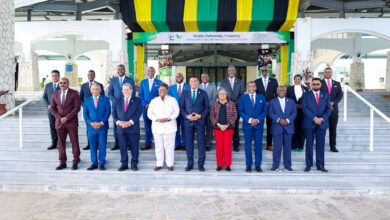PORT OF SPAIN, Trinidad and Tobago, Guardian – Data from the National Agricultural Marketing and Development Corporation (Namdevco) indicates an increase in the availability of selected agricultural commodities at the Norris Deonarine Northern Wholesale Market (NDNWM) for the period July to December 2013, the Central Bank of T&T said in its latest Economic Bulletin. Among the major locally produced food crops, larger quantities of sweet potato, cassava, cabbage and sweet pepper were available for sale, when compared with the same period a year earlier. The Trinidad and Tobago Agribusiness Association (TTABA), a high consumer of agricultural produce, was partly responsible for the additional supply due to operational difficulties surrounding the relocation of its operations and closure for the Christmas season.
The bulletin also provided an update on the Caroni GREEN Initiative. The Ministry of Food Production has developed a National Food Production Action Plan (NFAP) for the period 2012-2015 with a mandate to reduce the food import bill, reduce food inflation, create sustainable employment, contribute to economic diversification and increase food security. The action plan identifies six food groupings that are to be developed including staples, vegetables, legumes and pulses, fruit, livestock and aquaculture. In keeping with the mandate of the NFAP, the Ministry of Food Production launched the Caroni GREEN (Growers Responsible for Evolving and Enriching the Environment) Initiative (CGI) on June 5, 2013. The CGI is aimed at increasing the supply of locally produced food on the domestic market on a phased basis over a two-year period.
“This initiative involves the cultivation of 5,800 acres of idle agricultural land mainly consisting of two-acre plots that were leased to former Caroni 1975 Limited employees as part of their VSEP in 2003. Under the Caroni GREEN Initiative 4,500 tonnes of crops are expected to be produced at a cost of $6.8 million, generating $29 million in revenue and $12.4 million in profits,” the bulletin said. Using a shared value business model, the CGI aims to incorporate best practices and technologies, implement environmentally sound techniques and build long-term mutually beneficial partnerships with key industry stakeholders. Phase I of the initiative commenced June 16, 2013 with the planting of seventeen food crops on 25 per cent (141 acres in Central Trinidad) of the land earmarked for cultivation in this phase (a total of 560 acres). The land under cultivated was subsequently increased to 320 acres to accommodate the planting of an additional eight crops. Among the major crops planted were tomatoes, melongene, cabbage, cauliflower, hot pepper, caraille and chive. Table 1 below shows the amount produced during the period August-December 2013 for hot peppers, tomatoes and sweet peppers under the CGI.





